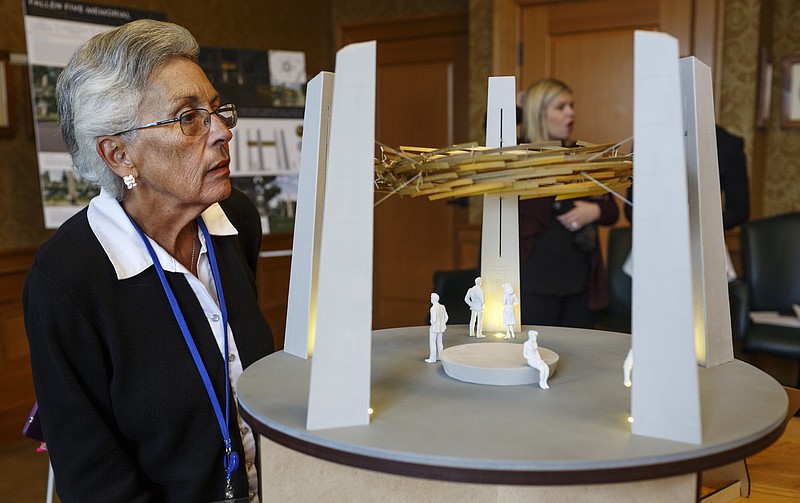At some point a few years down the road, a memorial at the south end of the Walnut Street Bridge will be installed, reminding all those who view it of a dark time in Chattanooga's history when a man could be lynched on the span over the Tennessee River.
No person connected with the 1906 lynching is alive today, and most area residents in 2018 couldn't imagine an angry mob being able to remove a prisoner from jail and take him to a public place and hang him.
Several miles up the river, and on land adjacent to it, another memorial is set to rise honoring five members of the military who were killed in a 2015 attack on two Chattanooga service facilities.
The attack was perpetrated by a radicalized member of a global religious faith, but most area residents couldn't fathom blaming the religious faith for the local man's terroristic actions.
Just over a century ago, the Daughters of the Confederacy erected a bust on the Hamilton County Courthouse lawn honoring a former Civil War officer who had been instrumental in the creation of the Chickamauga and Chattanooga National Military Park, which itself grew out of a peacemaking event between former Union and Confederate combatants.
More than 600,000 Americans were killed in the war that was fought in large part over slavery, but no one at the time of the bust's installation or now would condone dividing the country again or the continuation of the scourge of slavery.
The Civil War, the lynchings of Ed Johnson and Alfred Blount, and the terrorist attack on two local military facilities are part of our city's history. None are events to celebrate, or glory in, but all three nonetheless are part of our past.
We feel fortunate that today, for the most part and unlike other places in the South, Chattanooga is able to embrace its history, warts and all.
Many cities in the region, cities in which the Civil War played a part, have not been able to do that. Instead of leaving monuments of that war in place, where teachers and parents and historians could explain to future generations the sin of slavery and how a war was fought in part to keep it, they have cowardly removed monuments in the night, taken wrecking balls to them, or moved them out of sight and out of mind.
Our corner of Southeast Tennessee, where the war so conflicted area citizens that Hamilton County voted one way and Chattanooga the other about whether the state should leave the union, didn't have the sprinkling of monuments that other cities did.
It had only the bust of Confederate Gen. A.P. Stewart, whose likeness stands outside a rarely used door of the courthouse.
Sadly, even factions in Chattanooga that would endorse a memorial to Johnson, wanted the bust to the peacemaker removed.
"We find it offensive to be reminded constantly of the atrocities [it represents]," one bust buster opined.
Fortunately, the Hamilton County Commission voted 6-2 last October to keep the memorial to Stewart. It was the right thing to do because of how Stewart worked to preserve land marking a battle that killed too many fathers, son, husbands and brothers on both sides of the conflict and because he was part of a history of that war that shouldn't be erased.
Few Chattanoogans, after all, want to be reminded of the death of innocent men that took place on what is now an historic walking bridge used by thousands annually or of the horrible day less than three years ago when the city became one of an achingly growing number of burgs to experience a mass shooting.
But those events, just like the Civil War, are now a part of our DNA, moments we cannot whitewash or hope will be forgotten.
Some Chattanoogans might just as soon the late attorney Leroy Phillips and former reporter Mark Curriden had never resurrected the lynchings in their compelling 1999 book "Contempt of Court" about Johnson's story. Other area residents might just as soon the slaying of the servicemen be forgotten because of similar shootings around the globe by individuals of the same faith.
Like it or not, American Indian removal, brother fighting against brother, lynchings, Jim Crow laws, gang shootings and a terrorist attack are as much a part of the Chattanooga story as its manufacturing history, its philanthropic heritage, its public-private partnerships, its outdoor beauty and its renewed waterfront.
We can't change the past, but we can use our history to shape the future to be one of hope and opportunity for all our citizens. Let's also make that part of our heritage.
